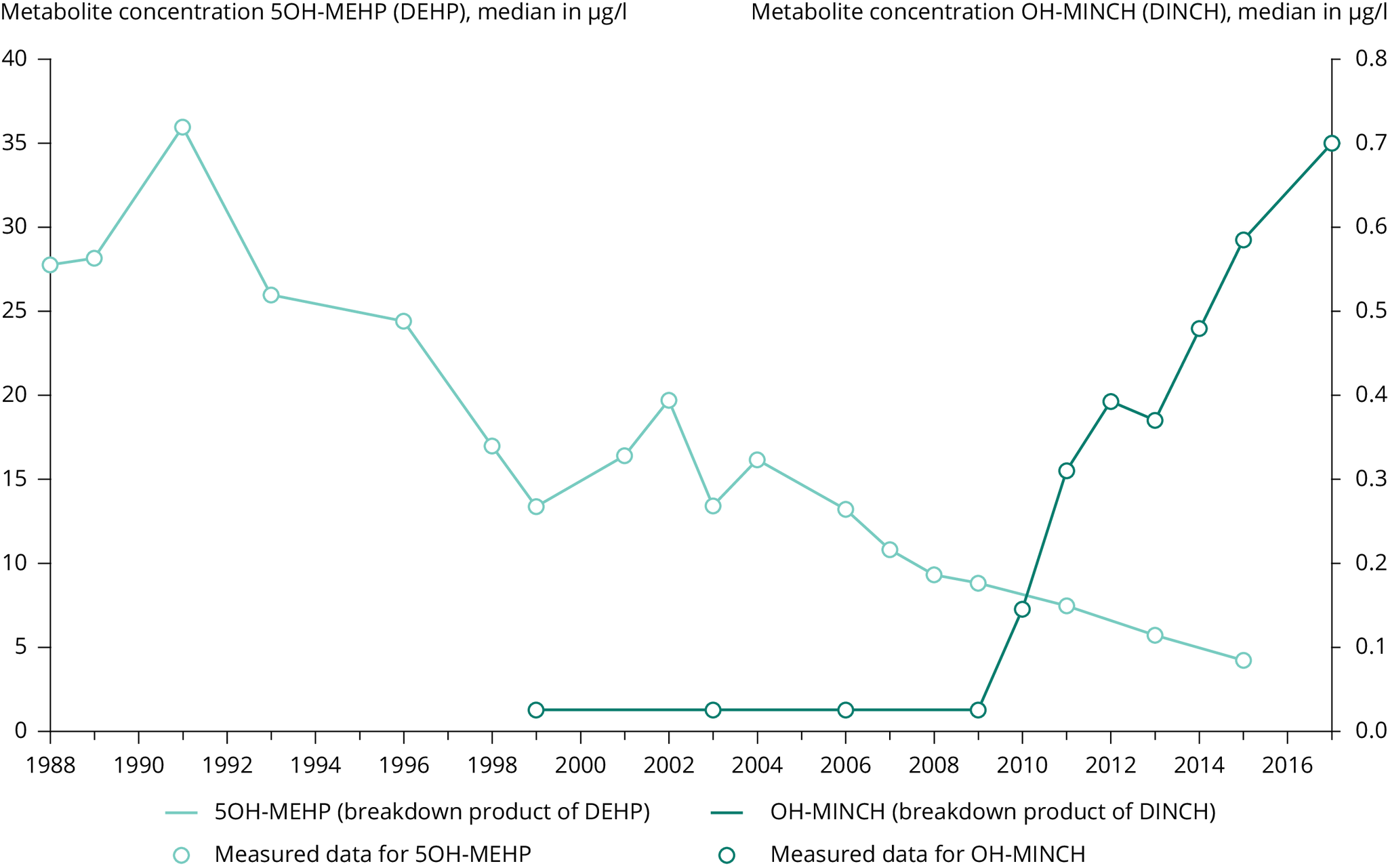Apel, P., et al., 2020, ‘Time course of phthalate cumulative risks to male developmental health over a 27-year period: biomonitoring samples of the German Environmental Specimen Bank’, Environment International 137, 105467 (https://doi.org/10.1016/j.envint.2020.105467).
Bopp, S. K., et al., 2019, ‘Regulatory assessment and risk management of chemical mixtures: challenges and ways forward’, Critical Reviews in Toxicology 49(2), pp. 174-189 (https://doi.org/10.1080/10408444.2019.1579169).
Frederiksen, H., et al., 2022, ‘Exposure to 15 phthalates and two substitutes (DEHTP and DINCH) assessed in trios of infants and their parents as well as longitudinally in infants exclusively breastfed and after the introduction of a mixed diet’, Environment International 161, 107107 (https://doi.org/10.1016/j.envint.2022.107107).
Kortenkamp, A., 2008, ‘Low dose mixture effects of endocrine disrupters: implications for risk assessment and epidemiology’, International Journal of Andrology 31(2), pp. 233-240 (https://doi.org/10.1111/j.1365-2605.2007.00862.x).
Kortenkamp, A., et al., 2022, ‘Combined exposures to bisphenols, polychlorinated dioxins, paracetamol, and phthalates as drivers of deteriorating semen quality’, Environment International 165, 107322 (https://doi.org/10.1016/j.envint.2022.107322).
Lange, R., et al., 2022, ‘Cumulative risk assessment of five phthalates in European children and adolescents’, International Journal of Hygiene and Environmental Health, 246, pp.114052 (https://doi.org/10.1016/j.ijheh.2022.114052).
Levine, H., et al., 2017, ‘Temporal trends in sperm count: a systematic review and meta-regression analysis’, Human Reproduction Update 23(6), pp. 646-659 (https://doi.org/10.1093%2Fhumupd%2Fdmx022).
Rudén, C., et al., 2019, Future chemical risk management: accounting for combination effects and assessing chemicals in groups. The report of the Committee of Combination of effects and assessing chemicals in groups, Swedish Government Official Reports (https://www.government.se/4adb1a/contentassets/ee36b3e49c354bb8967f3a33a2d5ca50/future-chemical-risk-management---accounting-for-combination-effects-and-assessing-chemicals-in-groups-sou-201945) accessed 21 October 2022.
Socianu, S., et al., 2022, ‘Chemical mixtures in the EU population: composition and potential risks’, International Journal of Environmental Research and Public Health 19(10), 6121 (https://doi.org/10.3390/ijerph19106121).

Document Actions
Share with others